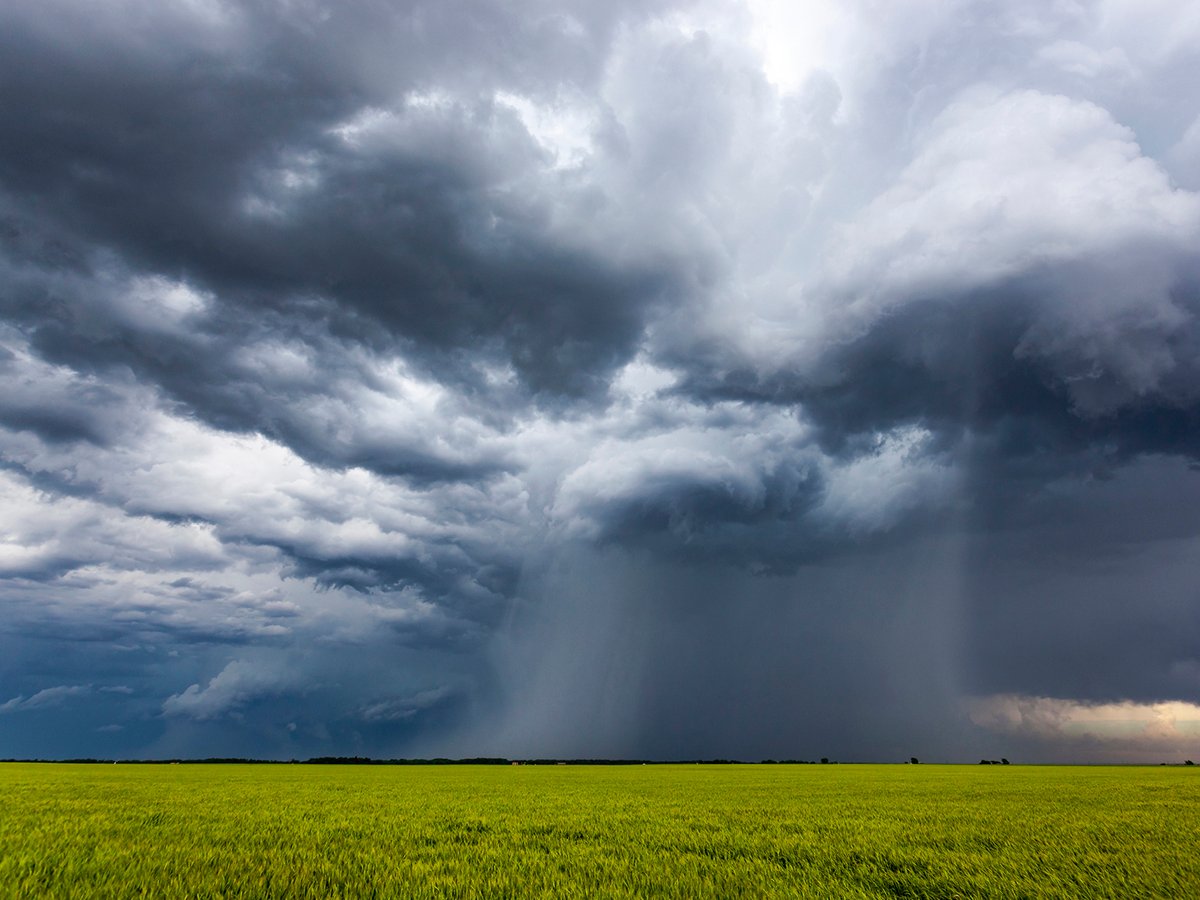Farmers living along Eagle Creek in Saskatchewan will be asked how two
altered dams are affecting them.
“We want to see how the local people are impacted by the project,
downstream,” said Don Dill, regional water resource manager with Sask
Water.
Dill said the community will have three weeks to respond to a public
posting of the water plan by market gardener and former cabinet
minister Berny Wiens.
“In our view, he is not in compliance with the act,” Dill said.
Read Also

Extreme rain increases as planet warms
In this issue, we are going to wrap up our look at extreme rainfall by examining the different weather patterns that tend to be associated with these rainfall events.
The dams, part of a Prairie Farm Rehabilitation Act project in the
1930s, have been raised and reinforced by Wiens to irrigate his
vegetable and fruit crops and fill a reservoir intended for future use
as a resort for tourists.
Wiens’ neighbour, Frank Blair, led a campaign this summer to get Wiens
to dismantle the dams and release water to farmers and ranchers along
Eagle Creek.
Blair and eight other area residents signed a petition asking Sask
Water to prohibit the damming and diverting of Eagle Creek. It was
delivered last week to Sask Water, Ron Osika, minister responsible for
Sask Water, and premier Lorne Calvert.
Blair hopes the petition will get water flowing past the dams again.
“The creek never stopped flowing until Berny erected that dam,” said
Blair, who claimed Wiens is holding back about 80 gallons of water a
minute.
The petition says the dam is illegal because it reduces natural water
flows and water availability for downstream users. It also notes the
ecosystem, wildlife feeding and waterfowl breeding grounds have been
affected.
Dill said Sask Water has visited the Eagle Creek site twice this summer
to measure flows from the springs, the amount of water behind the dams
and in the reservoir and Wiens’ irrigation needs.
He expected a final decision would be made when water data and local
community input has been received, which could take another month.
“We don’t expect it’s going to go away until we make a decision and
even then, it may not go away,” said Dill.














